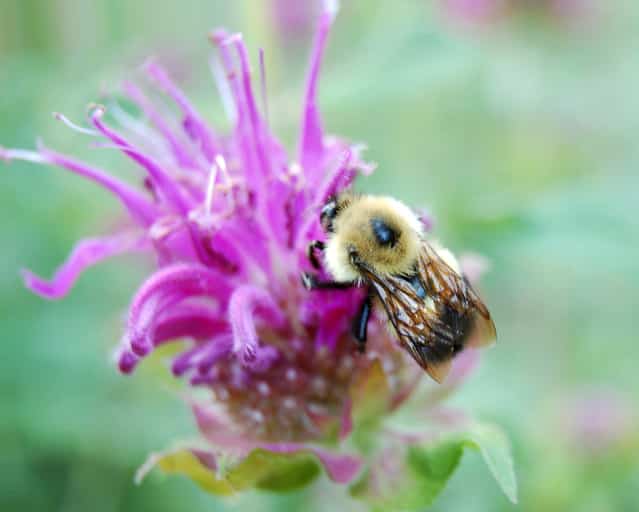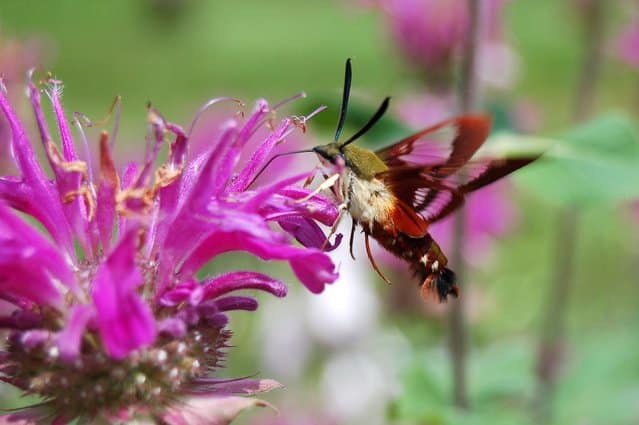Light up your summer garden and keep the bees, butterflies and hummingbirds happy by planting bee balm. This aptly named perennial comes in pink, red and white flower colors. The plant blooms throughout the warm season, offering its nectar up to winged visitors all summer long.
Depending on the variety, bee balm grows 2 to 4 feet tall. Some varieties thrive in wet soil, while others do well in average garden soil. Also known as horsemint, wild bergamot and Oswego tea, bee balm makes a refreshing minty beverage. Add the fresh flowers to fruit or green salads or use as a garnish on cakes. Dried leaves and flowers can also be used in potpourri and sachets. To have luck growing bee balm in your summer garden, keep the following growing tips in mind. Plant in full sun. Bee balm flowers the most profusely if the plant gets a lot of bright light. To preserve flowers in the south, southwest or west, plant in an area that gets some afternoon shade. Space plants 18 to 24 inches apart. Amend the soil. Prior to planting, add compost and a well-balanced organic fertilizer designed for blooming plants to the soil. Bee balm requires soil conditions on the acidic side, with a pH of 6-6.7, so if you live in an area with alkaline soil, such as the west, amend with soil sulfur to lower the pH. Water regularly. Bee balm will tolerate drought, but does best if you keep the soil moist, but not soggy. Water when the top one to two inches of soil has dried out. For varieties that thrive in wet soil, make sure to keep the plant constantly moist. Conserve moisture and discourage weeds by mulching with a 2-inch layer of shredded bark.

